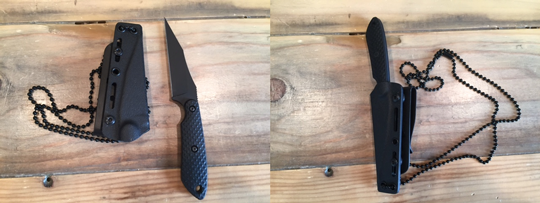Dear Black Bag Confidential Reader,
I received a lot of thoughtful feedback on the topic of implanting microchips in humans, including an important question regarding current applications of microchipping in animals.
Speaking of questions, don’t forget to send your survival inquiries to SPYfeedback@LFB.org. Both Cade Courtley and Omar Hamada will be taking the mailbag reins in the coming weeks, so get your questions in now.
I am sure if microchips in humans are implemented, we would only get the medical benefits at first. Then they would step in and use it for global identification, which is what scares the hell out of me. What do you think about microchipping animals, though? My vet recommends it, but now I’m not so sure.
— Cliff T.
You make a great point, Cliff. Microchipping humans would lead to major privacy concerns. It’s definitely not something I would be open to. The reality is it could reveal tons of personal information about you, which would be extremely dangerous if it got into the wrong hands.
That being said, I do recommend microchipping your animals. Most microchips used on animals are only capable of holding a tiny amount of data and don’t have GPS tracking capabilities.
If your pet ever gets lost, a shelter or vet’s office could scan the microchip number and call the company that made it to get your contact information and return your animal to you.
Another reason I strongly recommend microchipping your pets is because it can be used to prove ownership. Basically, if someone stole your dog, the police could scan the microchip to confirm who the real owner is.
What should I do with my pets if I have to bug out? Seeing all these abandoned animals in Texas is breaking my heart and it got me thinking. What kind of preparations should I make so my animals can bug out with me?
— Dolores R.
As you’re building up your own food storage, be sure to add extra food for your pets. In addition, I recommend preparing a small bug-out bag for each animal that includes their food, medications and perhaps a favorite toy. And don’t forget to add extra water to your water storage to account for your pets.
I enjoyed your recent article on the advantages of a neck knife. It would be helpful to know the type of neck knife you carry, since it works for you (and you’re the pro).
— Stephen B.
Funny you should ask, Stephen. I actually wear a custom neck knife that I had made for me. Take a look at the pictures below:

I like a small knife that fits in a Kydex sheath I can deploy quickly, which is what my knife does. When shopping for one of your own, just be sure you don’t buy some cheap Chinese neck knife for $10 — invest in quality.
I have a problem. A security expert says I’m being stalked. Some idiots put malware on my phone — they read my texts and emails and listen to my phone conversations. What should I do?
— Becky P.
The first thing you need to do, Becky, is get rid of your phone and get a new one. Some people might recommend doing a factory reset of your phone — which would theoretically erase everything that wasn’t on the phone when you bought it — but I wouldn’t want to risk it not being 100% effective.
You might want to consider getting a burner phone, which you can find at prepaid phone companies or big-box stores like Walmart. No matter where you get your next phone, make sure it’s password protected, and don’t ever share your password with anyone. If you do go with a burner, check out this article for tips on how to ensure your new phone remains untraceable.
I also recommend downloading a VPN (virtual private network) to your phone, which will keep hackers from accessing your phone when you’re using public Wi-Fi.
Hey Jason, I’m new to this whole “prepper” thing and I’m really overwhelmed with everything I need to do. Where’s the best place to start? Can you give me the three most important things I should do first? Right now I have nothing…
— John M.
The first three elements of preparedness I recommend working on are water, food and security.
Humans can survive only about three days without water, which is why it’s No. 1 on my list. Store emergency water in your home, and look into getting a quality survival water filter as a backup.
The best way to store water is with the WaterBricks water storage system. You can stash these handy containers anywhere to maximize your storage space — and they are individually easy to move so you can take them with you in an emergency.
The next thing I would concentrate on is building up your food storage. This is something you should start ASAP but can work on over time. Every time you make a trip to the grocery store, spend an extra $5 (or whatever is in your budget) and buy a few nonperishable goods to add to your emergency food stores.
Lastly, I suggest making sure you have security measures in place. This might mean purchasing a gun, building a safe room or installing a home security system (or all of the above). Something is better than nothing — so even if you start small, it’s better than not starting at all.
Stay safe,

Jason Hanson






